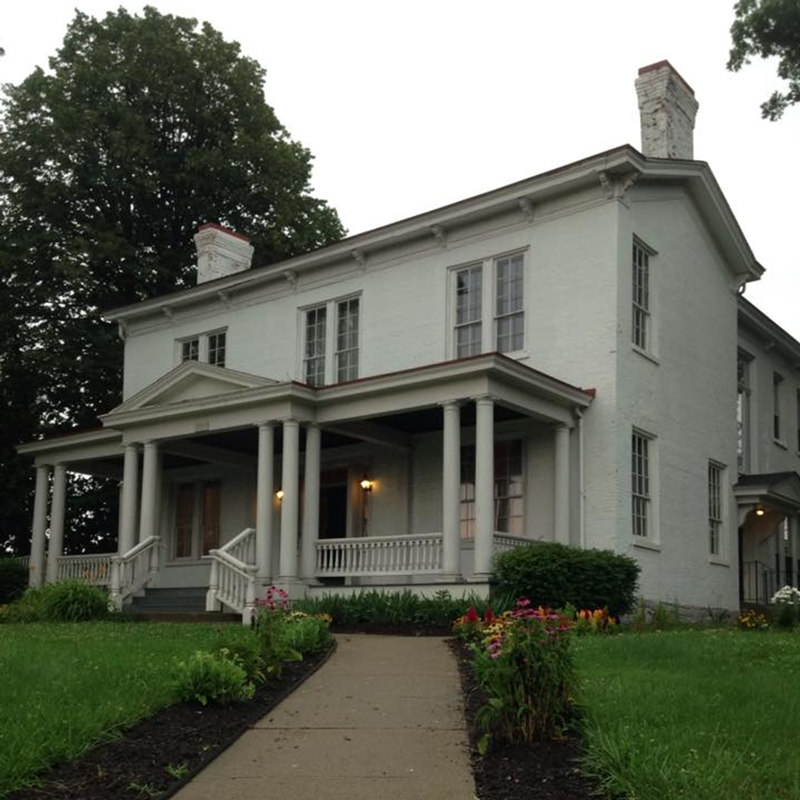Situated on a hill overlooking a strip of Gilbert Avenue sits an old house that stands out from its urban surroundings in Walnut Hills. Though it may seem out of place against the backdrop of apartment buildings and businesses, inside the house lies a story of being in the right place at the right time, of discussion and of empathy and compassion.
2950 Gilbert Avenue is the last remaining building that was once part of the Lane Theological Seminary. It is also the former home of Harriet Beecher Stowe, author of Uncle Tom’s Cabin. Although it is not where she wrote the novel that introduced Northerners to what slavery is like in the South and increased tensions between the two regions, it is where Stowe spent 18 years of her life.
Uncle Tom’s Cabin has been translated into more than 60 languages — second only to the Bible. It is no wonder that visitors from as far away as Russia and China have recently visited the Harriet Beecher Stowe House. In fact, Kelli Higginson, the house’s only paid employee, says most visitors come from out of town.
“This house is unique because at one time it was the ground center for discussion of slavery,” says volunteer John Douglass. Built in 1832, the house was saved from demolition and purchased by the Ohio Historical Society in 1943. It is still owned by the society today and is designated as a historic landmark.
Stowe lived in Cincinnati from her early 20s until 1859, one year before her famous book was published. Her presence in Cincinnati had a lasting impact on U.S. history and beyond, as Uncle Tom’s Cabin is read in schools around the world. While living in the border town allowed Stowe to see firsthand the desperation of slaves trying to escape to freedom across the Ohio River, it was also here that Stowe was exposed to the controversial debates going on at the seminary where her father, Dr. Lyman Beecher, was president.
Students of the seminary debated about the issue of slavery in 1834 before it became a hot topic throughout the rest of the U.S. Should slaves be emancipated? If slaves were to be freed, where should they go? Some supported sending freed slaves to Africa, while others thought they should be allowed to stay in the U.S. Enrollment at the seminary dropped after the school’s board of trustees dismissed these so-called “Lane Rebels.”
Living in Cincinnati also gave Stowe a stark look at the tension between the anti-slavery movement and those opposed to it. During the Cincinnati riots of 1836, the press that printed The Philanthropist, an abolitionist newspaper published by James Birney, was twice destroyed and thrown into the Ohio River. This sparked Stowe to find her own abolitionist voice and write her first remarks about slavery, in which she defended free speech and denounced mob rule. Her work was published in her brother Henry’s newspaper.
When the cholera epidemic swept through Cincinnati and Stowe’s one-year-old son Samuel Charles died, the personal tragedy caused Stowe to empathize with slave mothers who were often separated from their children. Her son’s death was the catalyst that caused Stowe to begin writing Uncle Tom’s Cabin.
While it is a work of fiction, Stowe’s novel depicts what American slavery was like at the time. Her visit to a Kentucky plantation allowed her to see how slaves lived. However, many argued that the book’s depiction of slavery couldn’t be accurate. Stowe responded with A Key to Uncle Tom’s Cabin, which provides factual evidence from her experience in Cincinnati to defend her claims. (Copies of the key just arrived in the Stowe House’s gift shop; Higginson says they were on backorder for six weeks).
The Ohio Historical Society plans to renovate the house this summer. The renovations will restore the house to what it would have looked like when Stowe’s family lived there. The house will also host Stowe’s 205th birthday celebration (with cake and ice cream, of course) on June 14.
The house is open for tours from noon to 4 p.m. on Fridays, Saturdays and Sundays. It is also the site of many field trips, lectures, film screenings, history portrayals and more. More information at stowehousecincy.org.






